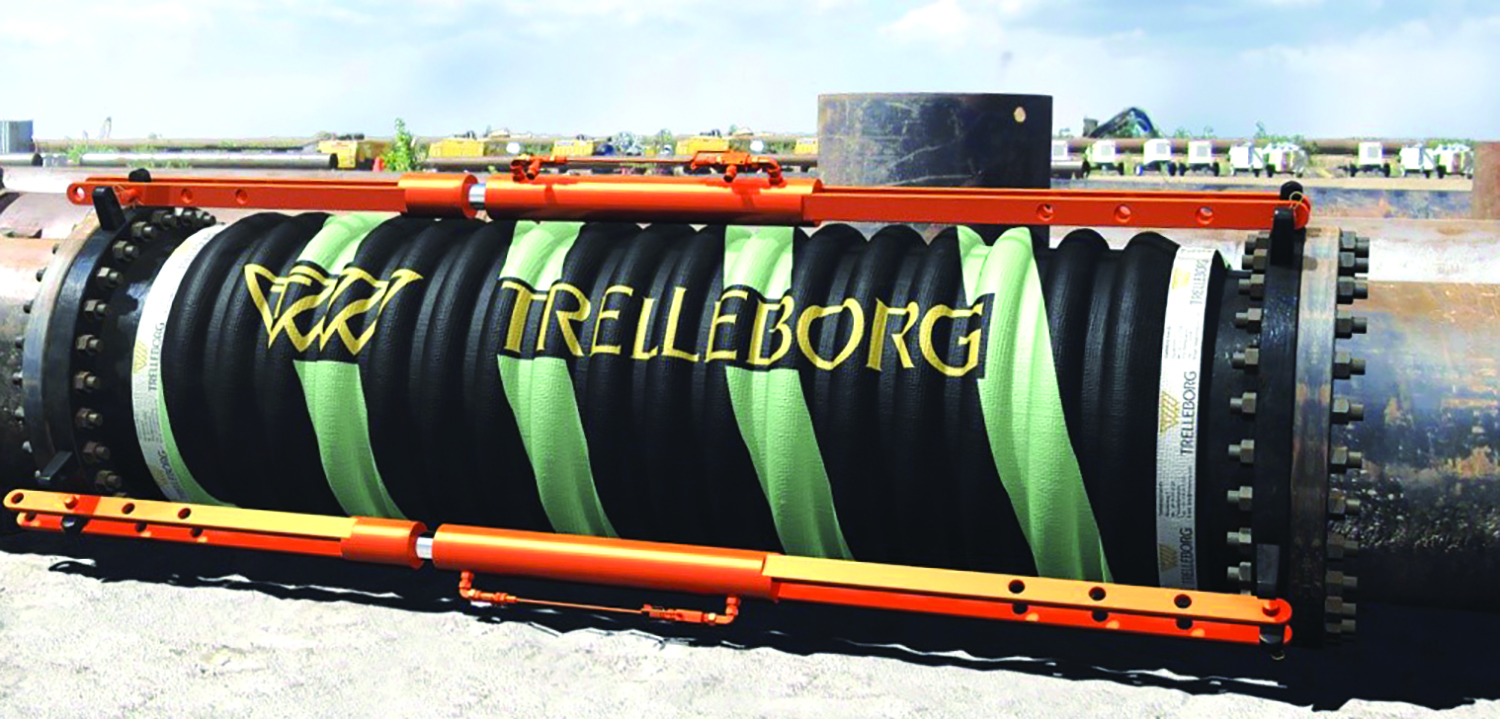
Trelleborg pipeline expansion barrels are flexible in all directions to compensate for thermal expansion and lateral deflection in a pipeline system.
Trelleborg Group’s marine and infrastructure operation, a part of its Industrial Solutions business area, has supplied rubber-lined expansion barrels to an unidentified customer in Fort McMurray in Alberta, Canada, described as one of the largest integrated combined oil sands mining and refinery facilities in the world. According to Trelleborg, the installation of its expansion barrels has significantly increased productivity at the mine while reducing downtime.
At large operations such as this, oil sands slurry and sediments are pumped long distances through the mine’s pipeline system. Accordingly, the mine specified Trelleborg’s expansion barrels to facilitate the slurry’s extended travel during highly variable temperatures at the site. The expansion barrels, which were tested over a four-year period at the mine, are flexible in all directions to compensate for thermal expansion and lateral deflection in a pipe system.
Richard Hepworth, president of Trelleborg’s marine and infrastructure operation, noted that testing at the mine site proved that the barrels allowed as much as 24,000 hours of slurry transfer in the system without maintenance, equating to approximately three years — in comparison with about 4,000 hours typically delivered by non-expanding barrels.
Trelleborg’s barrel design can operate in temperatures from -46°C to 90°C and has an expansion/compression range of 910 m. The barrel also provides an installation hydraulic ram as a feature for simpler maintenance and rotation.









